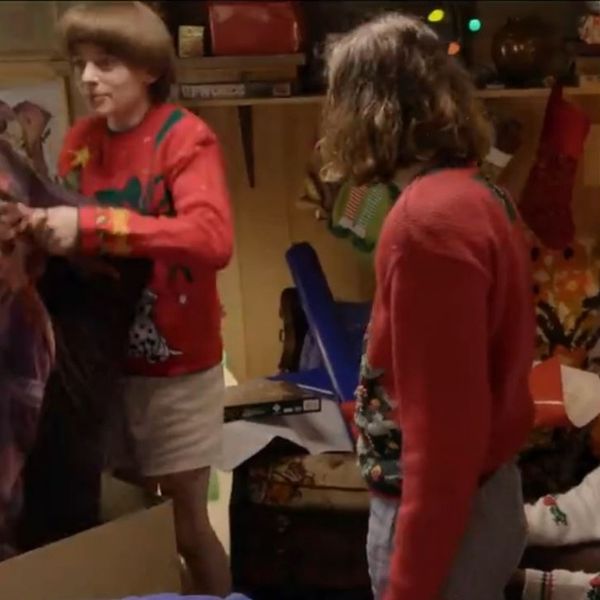September, 2000, HANOVER, Germany - What a perfect combination it was! A Star Trek convention and a World Expo, both in the astonishingly engaging city of Hanover, Germany.
Star Trek is a future-oriented show with a philosophy of responsibility for the environment we inhabit. The Hanover World Expo is an international fair with a strategy not only of displaying today's cutting edge technology together with ecological consciousness, but of planning that consciousness into the urban design of the long-term development of Hanover. And the city of Hanover that I visited this month was at once gracious and raucous, urban and sylvan, traditional and boldly moving into the future. It was a fascinating visit and I had a great time.
The Expo Trek convention was a wonderful extended family reunion. I visited with fans who had become friends over the years from the countless conventions and cruises we had shared. But this Star Trek convention was unique. Creative convention organizers par excellence, Dirk Bartholomae and Gerhard Raible, put this one in a huge revival meeting tent on a rustic campground. They included thought-provoking panel discussion topics new to Star Trek conventions on human rights and religious diversity. The topics seemed particularly pertinent in a Germany that is experiencing a disturbing resurgence of neo-Nazi activities. These panels were the sobering issues part of a wholly uplifting convention. The ovation at the conclusion of the closing ceremony, with sunflower presentations, was overwhelming. The fans "transported" me - with no help needed from Scotty at all.
The Expo, too, was transporting in its own extraordinary way - figuratively as well as literally. What first struck me was its size. It was vast. The guides told me it covered 160 hectares, which meant nothing to me. But I could see from the transport pod that carried me high above the expo grounds that 160 hectares was enormous. From this bird's eye view, I saw buildings in the shape of cones, pyramids, cubes, domes and countless other variations on geometric forms. A few even looked like shuttlecrafts and starships. Some were made of glass, others shone metallically and some had shimmering sheets of water cascading down its skin. They were strikingly futuristic. The guide told me that the theme of the Expo was "Humankind - Nature - Technology: A New World Arising."
All of the pavilions, however, were not avant-garde New World. Some, like those representing Bhutan, Thailand and Nepal, were decidedly traditional. They recreated richly ornate, time-honored temple structures of their respective cultures. Yemen even built a replica of a middle-eastern palace surrounded by a swarming market bazaar. They looked strangely anachronistic, and, to me, rather unexciting.
The most successful pavilions, I thought, were the ones that most imaginatively addressed the use of technology in humankind's relationship to nature. The Japan Pavilion was a spectacular example. It was an immense structure, but at the same time, light, graceful and undulating. The soaring vault-like construction was made entirely of recycled paper. The support structure members were made of paper rolled up tight and hard into rods as strong as bamboo poles. These brown bamboo-like tubes were woven in great arches to shape the multi-story structure. A white, translucent, weather resistant skin made of a combination of paper and plastic covered this construction. The brown bamboo-like poles formed an elegantly lacy pattern outlined by the soft white natural light seeping through the luminous skin. The pavilion was altogether fresh, strikingly contemporary and subtly Japanese in its aesthetics.
The pavilion representing the Netherlands also impressed me. The structure covered only 10 percent of the land. The rest was a vast garden landscape representing the varied flora of Holland. This land use illustrated the Dutch talent for making optimum use of their scarce land reclaimed from the sea. The pavilion itself was a wondrous structure stacked onto six levels, each lush with the elements of nature. I took the elevator to the top and gradually worked my way down either ramps or stairways. The roof level was a body of water with a grassy island in the middle with windmills as an alternative form of energy production. I descended to the next level, which was a theater and exhibition area sheltered from the outside by a curtain wall of water representing rainfall. The next level down was a living forest with real trees imported from Holland. The support structure holding up the upper levels were natural tree trunks. Each descending level artfully displayed the diverse flora of the land and the peoples' interrelationship with nature. The Netherlands Pavilion succeeded wonderfully in presenting virtually every facet of the life of the Dutch people and capturing the theme of the Expo in a limited space.
Limited space is a challenge but so is time. I had only scratched the surface of this gigantic exposition. There were many other tantalizing pavilions I wanted to visit but time was my great limitation. What I did experience, however, was dazzling. I will savor the memory for a lifetime.
I wanted to make time for Hanover itself. The city was a delightful discovery. Among Germans, Hanover has the reputation of being a staid, rather boring municipality. I discovered that to be totally false. The people were warm and gracious. The hospitality of Claudia Wolff and her mother Karin, both natives of Hanover and fans who have become friends, and a host of others like Sussanne, Andreas, Jan, and Filip, was terrific. Their love for Hanover was infectious. I came to love the city as well.
Hanover is most certainly not a staid city. I was introduced to how wildly riotous it can be on a Saturday afternoon. From morning on, I kept hearing an unrelenting, rhythmic drumbeat off in the distance. It seemed to be coming closer to my hotel. I asked the clerk at the reception desk about it. He smiled a cryptically insinuating smile and informed me that it was the Reincarnation Parade held annually in Hanover. It sounded like some religious observance to me. When the parade finally arrived, however, wildly thumping dance music and all, I discovered to my wide-eyed amazement that what I had thought to be a spiritual pageant was, instead, the most outlandish rave parade I had ever seen. Actually, it was the first one I'd ever seen -- mile after unending mile of writhing, swaying bodies - some with very little on - dancing in sheer ecstasy. In fact, more than a few seemed to be on some chemical ecstasy. There were flat bed trucks overflowing with prancing, jiggling bodies. There were double-decker buses crammed with dancing bodies. And the street was a sea of writhing, surging bacchanalia. I'm from Hollywood but Hanover sure showed me a thing or two. One thing for sure - Hanover ain't staid.
And Hanover is urbane. The centerpiece of the city is it's "new" town hall or rathaus built in 1913. The neo-Renaissance building with its high domed cupola looming over the city was damaged badly during the bombing of the Second World War but has been carefully rebuilt. In the great rotunda are four large models of Hanover at different periods in its history. The model of the ruined city in 1945 was a sobering reminder of the madness of war. Andreas and Sussanne took me up to the very top of the building in a unique incline elevator that traverses the curve of the dome. The view from the top was breathtaking. On another morning, Claudia, who works in the city's urban planning department, took me for a walk around the lovely park and pond behind the town hall. She told me that Hanover is a city that loves its parks and gardens and is considered one of the greenest cities in Germany. I agreed. I told her I loved my hotel overlooking a man made lake, Maschsee, with a forested park around it with running, walking and bicycling paths. I jogged around the lake every morning.
Hanover is, as well, a sophisticated modern city. There is a controversial new bank high rise building looming up over the treetops. Some in Hanover are opposed to the glassy new presence on the skyline and others love it. The debate is healthy evidence of the passion the people feel for their city. I think it is a dazzling building and will be an enhancement of the Hanover skyline as well as its streetscape. I'll stay tuned to the debate.
On a trolley ride through the city, I noticed another eye-catching new building under construction. The medium rise office structure was twisted in place with staggered window placements, like a building caught in the middle of a whirlwind. I recognized it instantly as the signature style of Californian architect, Frank Gehry who designed the much-discussed Guggenheim Museum in Bilbao, Spain.
I was visually stopped even by some of the trolley stops. They were contemporary art pieces in themselves. One was a fanciful composition of bright yellow and black blocks. Another looked like a sculptural tortoise shell. We rode past the once controversial, now much loved Nana statues - three colorfully whimsical polyester sculptures of rotund dancing female figures - sort of like sculptural rave dancers in the Reincarnation Parade. Taking the trolley through the streets of Hanover was like a trip through an outdoor contemporary art gallery. Hanover is a bold, culturally venturesome city.
It also seems to be a foresighted planner of its urban development. Claudia showed me a model in the lobby of her office building of a new town called Kronsberg being built in concert with the Expo. The residential units built for the staff of Expo will become housing for the Kronsberg community to come. The new public transportation system built for Expo will also be the transit system to support the new town. The structures built for Expo itself will be reused after the exposition as cinemas, academic institutions, and retail and office buildings that will become a part of the Kronsberg job, shopping, education and service sector. Small community green space is either already built or designed into the future residential districts. Rainwater is planned to be captured and recycled to keep the public parks lush and green. The Expo theme of "Humankind - Nature - Technology: A New World Arising" is not just a trendy slogan. It is indeed the driving philosophy of this fascinating city. I know I'll be coming back to Hanover to see how this New World rises in the future.
'Captain Marvel' May Have Just Introduced A New Black Female Superhero Right Under Our Noses

Warning: Minor spoilers ahead.
Nothing is a coincidence in the complex Marvel Cinematic Universe.
Now that Marvel Studios and Disney finally gave a female superhero her own movie, we realize Captain Marvel may have introduced a young character who takes on a more significant role in the future of the MCU.
The '90s-set origin story is led by the dual personalities of Carol Danvers — a U.S. Air Force pilot; and Vers, a Kree from the planet Hala in another life — and becomes Captain Marvel, expertly played by Brie Larson.
Without sounding too cryptic, Captain Marvel is the sum of Carol and Vers, and the complex narrative revolves around Vers finding out about her past.
Captain Marvel introduces us to a varied ensemble of personalities, including a young Nick Fury, played by Samuel L. Jackson, with whom she teams to fight off shape-shifting aliens called skrulls.
Instead of relying on a male love interest, Danvers has a best friend in Maria Rambeau, played by Lashana Lynch, giving the genre a refreshing feminist twist on the buddy action flick.
But it's Maria Rambeau's daughter Monica (Akira Akbar) who is making ardent fans giddy with anticipation about the character's future.
the future is beautiful and your name is monica rambeau https://t.co/HtNuXrWaZL— captain carol ︽✵︽ (@captain carol ︽✵︽) 1551819911.0
The precocious 11-year-old is, for all intents and purposes, just an adorable, "normal" kid who has ambitions of flying in the Air Force to emulate "Auntie Carol."
Monica's bravery belies her age as she encourages her mother to flee into space at the risk of never seeing her again for a mission involving the skrulls.
But there is more to her intelligence and inherent altruism, and those familiar with the comics are aware of her exciting destiny.
Refinery 29 revealed that the adult Monica Rambeau is just another iteration of Captain Marvel, and she is expected to come into prominence during the supposed 24-year time gap between Captain Marvel and Avengers: Endgame.
T'Challa is in the MCU Carol Danvers is in the MCU Monica Rambeau is in the MCU Y'all we are so close! https://t.co/rilnRAoErT— Raymond X (@Raymond X) 1552076618.0
Monica's origin story includes being a lieutenant in the New Orleans harbor patrol who comes into contact with "extra-dimensional energy" while preventing the creation of a powerful weapon.
As a result, she is able to manipulate, absorb and create energy.
Give Monica Rambeau her things!!!!— Ira Madison III (@Ira Madison III) 1552331197.0
According to the Hollywood Reporter, Monica is the second of six characters to take on the name of Captain Marvel and becomes the leader of the Avengers. She eventually adopts the codenames: Photon, Pulsar and in 2013, Spectrum.
✴️ monica rambeau: captain marvel | photon | pulsar | spectrum reading guide ✴️ https://t.co/etPruwZfbA— val saw captain marvel (@val saw captain marvel) 1552160876.0
The multifarious identities are complex for the uninitiated, for sure.
This might help:
In #captainMarvel they introduce the daughter of Monica Rambeau. Her name is also Monica Rambeau. In 2019 she would… https://t.co/MZMR6Cjcqm— Marc Dirix (@Marc Dirix) 1552071449.0
Fans are keeping their fingers crossed in the hopes that we'll be seeing the black female superhero's destiny realized.
Is anyone hoping that little Monica Rambeau is all grown up and busts into Avengers headquarters to show up the Sci… https://t.co/T56AX95nOC— Liz Nicole (@Liz Nicole) 1552015405.0
I know they didn’t give me all those heroic closeups of baby Monica for no reason. @ Marvel GIVE US MONICA RAMBEAU https://t.co/ECp8TlrPpQ— Eartha Snit (@Eartha Snit) 1552011810.0
Monica Rambeau and all of her code names getting ready for the next phase of the MCU https://t.co/o87qOdsoBo— Child of Hazel and Smoke (@Child of Hazel and Smoke) 1552257376.0
fun fact: maria’s daughter monica rambeau actually becomes captain marvel in the future and becomes the leader of t… https://t.co/pzzVyfHMf7— natasha ☾ | SAW CAPTAIN MARVEL !!! (@natasha ☾ | SAW CAPTAIN MARVEL !!!) 1552208712.0
The #CaptainMarvel trailer didn't do a good job. With this piece, I wanted to be clear that this film is for Black… https://t.co/3hckZUDltH— Jaleesa Lashay Diaz (@Jaleesa Lashay Diaz) 1552069934.0
I want a sequel yesterday. I just don’t know where they will have it. Will it take place in the past? (So much more… https://t.co/taq2pR4NyN— RoboFan (@RoboFan) 1552018976.0
@MarvelStudios Monica Rambeau! #CaptainMarvel I can't wait for her to get her powers! https://t.co/CCQ9P3iFFV— Jason (Captain Marvel did THAT) (@Jason (Captain Marvel did THAT)) 1551802986.0
I also freaked when Maria finally called her daughter Monica and I was like THERE SHE IS, MY GIRL, MY STAR MONICA RAMBEAU— Becca 💛 ECCC Q8 (@Becca 💛 ECCC Q8) 1552063569.0
As we've seen in Black Panther, the emergence of more black female superheroes is encouraging, and the seed planted with Monica Rambeau in Captain Marvel augurs a bright and exciting future for the MCU.
People Are Roasting Trump Over His Mind-Numbing Observation About The Wetness Of Water 😂
Donald Trump thanked the first responders who came to the aid of victims of Hurricane Florence. The storm devastated portions of North Carolina, dumping massive amounts of rain and damaging millions of dollars in property. Many natural areas were destroyed, some farmers lost everything and more than a few people have been left homeless. The first responders after this massive storm were literal life savers, and Trump was absolutely right to thank them. Unfortunately, the sentiment of his message was lost for many people because he didn't seem to put any effort or preparation into what he was saying. Then, in the middle of his off-the-cuff message, he confused everyone by talking about the wetness of water.
As Trump described the storm and the importance of first responders he told the world:
This is a tough hurricane, one of the wettest we've ever seen from the standpoint of water. Rarely have we had an experience like it and it certainly is not good.
The Tweet went out in the middle of the day on Tuesday, September 18th. At the time of this article, it hasn't even been up for 24 hours and already has over 13,000 comments. Many of them pointed out how Trump didn't even seem to try...
and how asinine his description was.
We don't know if Trump will continue to address the public by releasing these kinds of videos, or if they will continue to be as unrehearsed as this one is. We assure you, if they are, Twitter will have plenty to say about it.
H/T: Huffington Post, Twitter
Macaulay Culkin Is Having Fans Vote On What He Should Legally Change His Name To—And The Options Are Bizarre 😮
Have you ever wanted to help your favorite celebrity reach their potential by giving them a new name? Fans of Macaulay Culkin will be able to do just that, as he's allowing them to vote and pick his new middle name.
The choices are beyond strange.
Thanks for having me @jimmyfallon @FallonTonight !!! I'll let you know how the name change works out! https://t.co/iIkTC8OyXH— Macaulay Culkin (@Macaulay Culkin) 1543452222.0
In a segment on The Tonight Show with Jimmy Fallon, Culkin announced his desire to change his middle name to something else. He allowed people to submit names for the last month, and narrowed those down to the top five.
Some of the suggestions were interesting, to say the least.
@DevonESawa Weird. I'm about to change my middle name. Any good suggestion? Go to https://t.co/BYXGIWJK3g— Macaulay Culkin (@Macaulay Culkin) 1540529059.0
@IncredibleCulk @FallonTonight @jimmyfallon It should be "Culkin, Macaulay" as a middle name. Will be read as: Mac… https://t.co/xRo5AiR8jd— carmineenimrac (@carmineenimrac) 1543469371.0
@IncredibleCulk @jimmyfallon @FallonTonight How did you miss "Macaulay Skulking Culkin"?!— Caleb DAVIS (@Caleb DAVIS) 1543487990.0
@ComicBook @IncredibleCulk Pls add Cacaulay Mulkin as an option— Matt Michler 🌹 (@Matt Michler 🌹) 1543603411.0
@ComicBook @IncredibleCulk Kevin! Obviously.— Andrew 🐼 🐝 (@Andrew 🐼 🐝) 1543603516.0
The official choices: Shark Week, The McRib Is Back, Kieran (submitted by his famous younger brother), Macaulay Culkin, and Publicity Stunt. That last one was suggested by Culkin's girlfriend, actress Brenda Song, and gives away the game.
Fans are still excited to vote for his new name.
@IncredibleCulk @jimmyfallon @FallonTonight Macaulay “Shark Week” Culkin has a nice ring to it.🐰 Vote on… https://t.co/AS5ce275jl— Shark Week (@Shark Week) 1543526453.0
The moment of joy that hopefully comes to us all during the day just transpired for me and funny enough, it took le… https://t.co/stOVPePmpy— Sia Brooks (@Sia Brooks) 1543606608.0
Macaulay Culkin Needs A New Middle Name https://t.co/HO9ZMUM1O1 via @bunnyearsweb @IncredibleCulk I voted for "Kier… https://t.co/jnVAa6NTlp— Stetson (@Stetson) 1543815411.0
I voted for @IncredibleCulk new middle name, what did you do today?— Catalina F 🇨🇱 (@Catalina F 🇨🇱) 1543801274.0
@IncredibleCulk @jimmyfallon @FallonTonight I like Keiran— Melissa (@Melissa) 1543517677.0
McAuley Culkin is allowing fans to vote on what is legal middle name should be, two of the final 5 is “Macauley Cul… https://t.co/KUPTU0HnKR— YOUAREDEAD (@YOUAREDEAD) 1543620499.0
@IncredibleCulk @jimmyfallon @FallonTonight Just for you to know, I voted Macaulay Culkin!— 🍀 Maria (@🍀 Maria) 1543495868.0
This is all a publicity stunt to drive traffic to Culkin's website, Bunny Ears, launched earlier this year in March. The site bills itself as a lifestyle and holistic health brand, similar to Gwyneth Paltrow's Goop. However, the articles are jokes or satirical.
Good luck finding the site if you tried to go there right after the Fallon segment.
@IncredibleCulk @jimmyfallon Look at the bunny ears website now after @jimmyfallon voted on @IncredibleCulk middle… https://t.co/PFAwxsRB8E— Charles John Kelly (@Charles John Kelly) 1543485190.0
With articles like "A Tour Guide Of The Places Where Men Have Dumped Me" in their 'Travel Guides' section, or "Meditative Things White People Can Do While Black People Attempt To Explain White Privilege" under 'Spiritual Wellness,' it's difficult to imagine the site is wanting for traffic.
Time will tell what Culkin's new middle name will be, but as of this writing, it's looking like he'll be known as Macaulay Macaulay Culkin Culkin. Which is a shame, because Macaulay Shark Week Culkin had such a nice ring to it.
H/T: Huffington Post, Bunny Ears
Time-Lapse Video Shows What A Rocket Launch Looks Like From Outer Space—And It's Dazzling 😮
We've all seen videos of rockets launching from the ground, but what does the event look like from space?
European Astronaut Alexander Gerst, on board the International Space Station, managed to capture time-lapse footage of the Russian Progress MS-10 cargo spacecraft flying through Earth's atmosphere on its way to delivering supplies to ISS.
Very few people will ever have the chance to see an event like this in person.
Russian Rocket Launch Seen by Space Station - Amazing Time-Lapse Videoyoutu.be
Gerst created the video by setting up a camera to take regular photos through the wrap-around Cupola window of the station, which resulted in a video roughly 16 times faster than real life. Watching the rocket launch in person took 16 minutes but, in Gerst's video, the launch, stage one re-entry, and escape from the atmosphere all occur within one minute.
@_TheSeaning @Space_Station That's awesome!— Scott Waby (@Scott Waby) 1542898886.0
The rocket in the video, known as Progress 71, was on its way to delivering 5,652 pounds of supplies to ISS. The next flight, pushed back to December 3 after a sensor malfunction resulted in the cancellation of an October 11 liftoff, will bring replacement personnel for NASA astronaut Serena Auñón-Chancellor and Russian cosmonaut Sergey Prokopyev. Both have been in orbit since June).
If all goes according to plan, the Canadian astronaut David Saint-Jacques will take off from the steppes of Kazakhs… https://t.co/o0LpNWTsJQ— CTV Vancouver (@CTV Vancouver) 1543800600.0
People online were amazed by the footage from space.
@_TheSeaning @Space_Station Seán, thank you for this. THIS is easily one of THE most mesmerising, and exquisitely s… https://t.co/a440XaOEX6— Nathanial_LB - نثنيال (@Nathanial_LB - نثنيال) 1542915054.0
@_TheSeaning @jasonrdavis @Space_Station SO COOOOL— Justin Foley (@Justin Foley) 1542908365.0
@_TheSeaning @Space_Station wow. just...wow. this is incredible— Sarafina Nance (@Sarafina Nance) 1542918245.0
I hardly think I need to hyperbolize this at all, because it’s simply so freaking cool: Time-lapse video of a rocke… https://t.co/lx32324AWv— Phil Plait (@Phil Plait) 1542989889.0
@BadAstronomer I watched this 5 times with my jaw on the floor... And then made everyone around the Thanksgiving ta… https://t.co/iMbSm8nvIO— Marc Leatham (@Marc Leatham) 1542990342.0
@BadAstronomer @LongDogSecurity https://t.co/Yv3YZQI9Oe— MO News DAilY (@MO News DAilY) 1543001454.0
@BadAstronomer I think that’s the most beautiful photo of Earth I’ve ever seen— Ben Migliore (@Ben Migliore) 1543092741.0
@freak1ngawesome Reverse of shooting star— Shivani Jadeja (@Shivani Jadeja) 1543667552.0
@AntonioParis What an inspiring way to begin my day! Thank you! 💫🚀✌🏻— Heather Call-Me-Elf-One-More-Time Hartley (@Heather Call-Me-Elf-One-More-Time Hartley) 1543492212.0
Videos like these are a nice reminder that space truly is the final frontier! If ISS is looking for a soundtrack to put behind their video, we have an idea:
Star Trek: The Next Generation Intro HDyoutu.be















